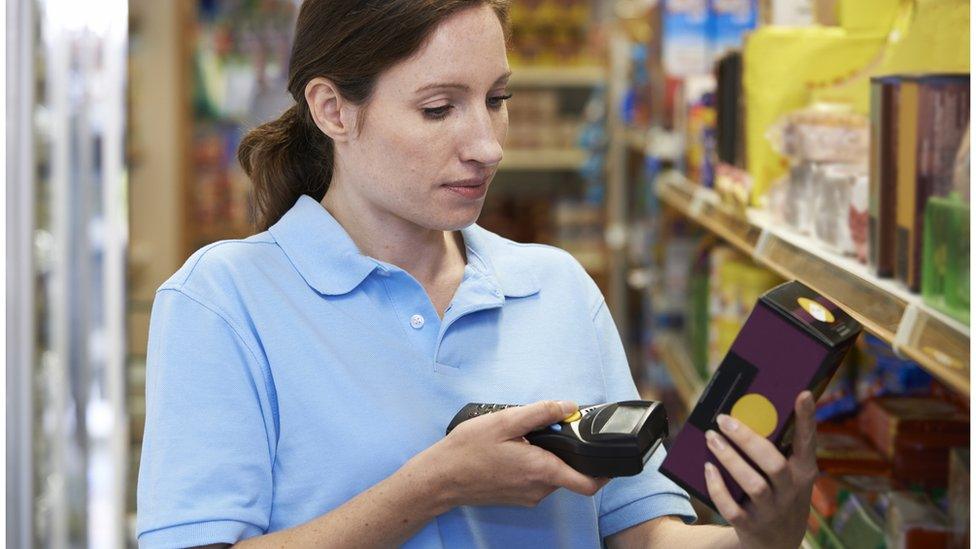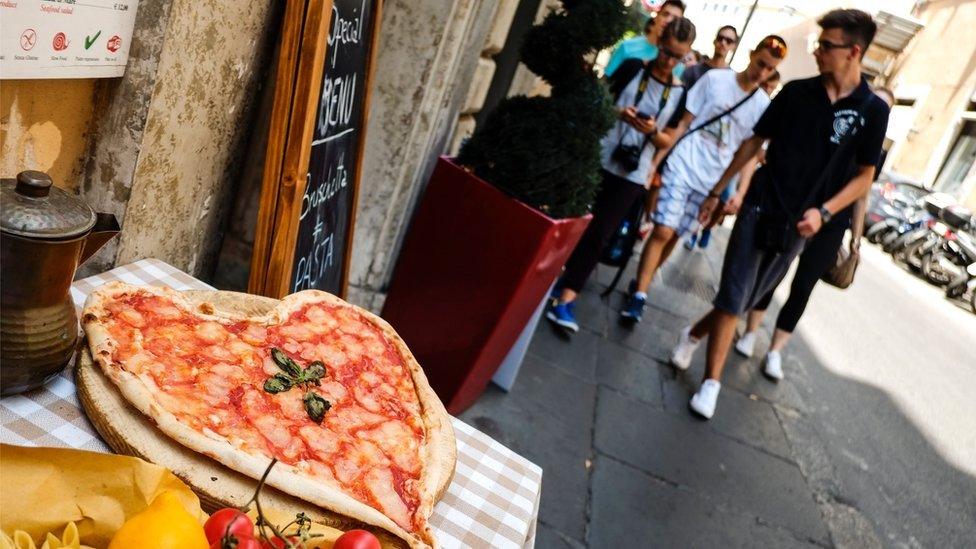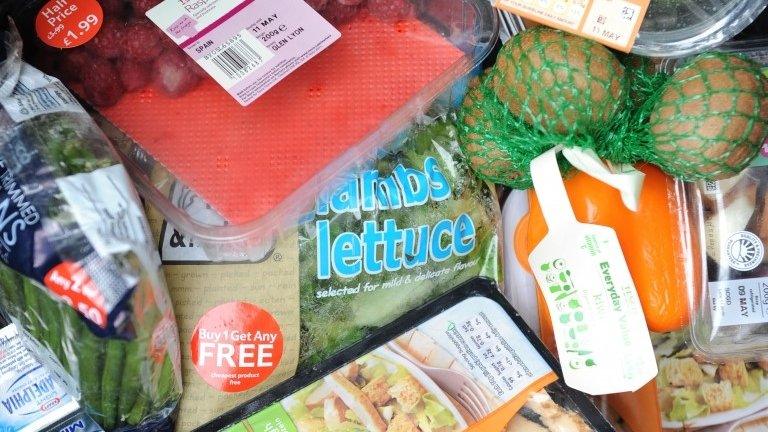Yellow stickers: Secrets of cut-price food revealed
- Published

Andy Webb has an addiction. And he's not the only one.
The 37-year-old Londoner can't walk past a supermarket without checking whether it's selling cut-price food.
He isn't just looking for discounts. He's looking for yellow stickers, which go on food when it's almost out of date.
"If £4 mince is reduced towards £1, I'll be far more excited than a grown man should be by the price of mince," he says.
He once got £30 of food for £7.50 and proudly put the photo on his blog, external.
"I do have a problem," he admits.
But his quest for yellow stickers is, perhaps, understandable.
Discounts range from a few pence to more than 90 per cent. But - unlike with normal sales - it's hard to know where, and when, to find the biggest bargains.

Yellow stickers: our bargain-hunters share their tips

Emma Drew, Andy Webb, and Katy Stevens
"You might roll your eyes, but my husband and I split up on Christmas Eve and hit up the local Waitrose, Sainsbury's, and Tesco, then go to Co-op on the way home. The reduced food keeps us going throughout January." Emma Drew, emmadrew.info, external
"The most important thing is, don't just buy it because it's reduced. It's only a bargain if you want it." Andy Webb, becleverwithyourcash.com, external
"The day before a bank holiday, or Christmas, is definitely a good time to find yellow stickers. I've heard of a £40 turkey for £2 on Christmas Eve." Katy Stevens, katykicker.com, external

Yellow stickers are not advertised but they can appear on any food, at any time, in any supermarket.
Some days, dozens of items will be on offer. At other times, all food is frustratingly the full price.
Dozens of online forums are dedicated to finding the best bargains, external - and some savvy shoppers can spot a pattern.
"We used to live two minutes from a Co-op," says Emma Drew, 28, a bargain-hunter from Ely in Cambridgeshire.
"At 7.30 every night you could always find bread for 10p."
For Katy Stevens, also 28, from Harlow in Essex, the yellow sticker sale starts slightly earlier.
"At Sainsbury's, Marks and Spencer, and Waitrose, I find that 5pm to 7pm is the best time," she says.
"You can get anything from 75 to 90 per cent off."
So is there a golden period to look out for?

Scanners use two pieces of information to work out which items to reduce
Asda says fresh food that is unlikely to be sold is marked down on the morning of its sell-by date. Bakery items are discounted later.
Co-op says the "majority" of price cuts take place in the early afternoon - with another two reductions allowed if the food is not sold.
Marks and Spencer also reduces food up to three times on its sell-by date, while Morrisons and Tesco apply discounts at any time during the day.
But how do supermarkets decide whether to put yellow stickers on food? The answer is supply and demand.
At all supermarkets, the newest food is placed at the back of the shelf, with the oldest at the front.
Usually, a worker will scan the barcodes of items nearing their sell-by date.
The scanner works out two things - how many items are left, and how quickly they are selling.
If there is likely to be unsold stock the scanner will suggest a price decrease.
It is for this reason that yellow stickers are - apparently - more common in the evening. Only then can the scanner be sure that food is not selling well.

Supermarkets give away thousands of tonnes of unsold food every year
But - as Tesco's quality director, Tim Smith, points out - it is "rare" that stores have to discount many items.
"We believe that no food which could be safely eaten should go to waste," he says. "So we take great care to order the right amount of food for our stores."
All supermarkets say reducing waste is a priority. And, if a yellow sticker doesn't help shift the food, it is not necessarily thrown away.
Tesco, for example, use an app to work with local charities. The company says no food will go to waste in its stores by the end of 2017.
Morrisons donates 200,000 products a month to charity. And Marks and Spencer says that, if it cannot give the food away, it sends it for anaerobic digestion - turning waste into energy.
But until it is thrown away, eagle-eyed shoppers will look for that yellow sticker, glistening in the chiller cabinet.
"You're only talking about a pound or two - it's not like you're saving £200 on a TV," says Andy.
"But everyone loves a bargain, don't they?"
- Published31 October 2016

- Published3 August 2016

- Published6 April 2014
